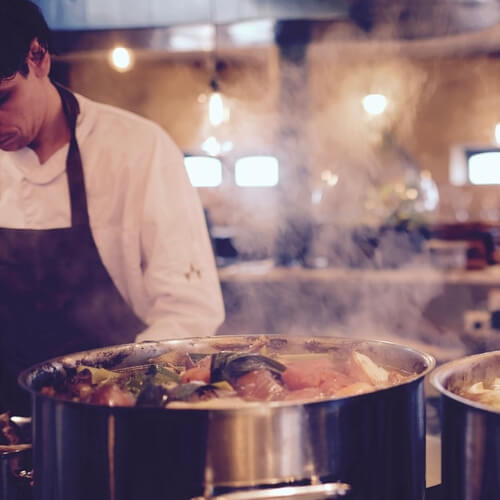Foodservice research reveals chefs preferences
Chefs have a preference for traditional communications methods over social and digital media when choosing new products to list on their menus according to new research.
Undertaken by food PR and communications specialist Pelican, the foodservice research reveals chefs preferences, and found that chefs still prefer samples, face-to-face meetings and trade shows when choosing products and services.
Whilst chefs have embraced social media in the workplace it is primarily for keeping in-touch with colleagues, following celebrity chefs and keeping up to date with industry news.
The foodservice research examined the communications preferences of profit sector and cost sector chefs and caterers. It shows that supplier samples (79%), chef & caterer exhibitions (73%) and word of mouth (72%) are the preferred channels. This was closely followed by recipe books (69%), chef & caterer magazines – both stories and advertising (65%), and supplier sales teams (64%). Supplier demonstration days were also cited (60%) as being very useful.
The findings have implications for organisations supplying the foodservice industry, according to Pelican Communications managing director Michael Bennett.
He commented: “Despite the huge growth in social and digital media, traditional marketing techniques are still highly influential with chefs and should continue to form a key part of any marketing communications plan targeting profit and cost sector chefs.
“With 85%* of chefs using social media at work, social has a vital role to play in communicating with chefs,” added Bennett, “but it is not their primary source of information when researching new products and services, it ranked at 17th in our survey.”
Anecdotal evidence gathered during Pelican focus groups has highlighted that many chefs still consider social media to be a personal communications channel – for private correspondence with friends and family.
Bennett added: “Chefs and caterers are creative, visual and practical people. It is not surprising that they are demonstrating a preference for exhibitions showcasing foods, samples which they can trial and recipe books which can give them inspiration. Marketing communications campaigns need to take these preferences into account.”
Pelican’s research also investigated the tonal character of communications which respondents most closely related to. Profit sector chefs were 60% likely to find communications which depicted ‘real’, ‘dynamic’ and ‘physical’ settings more appealing, whilst 61% of cost sector caterers preferred ‘immaculate’, ‘tidy’ and ‘cheerful’ settings.
Bennett concluded: “As well as evaluating the most effective channels, the tone of communications should also be considered when putting together communications campaigns. From our focus groups and quantitative research, there was a clear difference between the profit sector whose young dynamic chefs associate themselves with a physically demanding setting, and cost sector chefs who relate to an organised and immaculate space.”
Pelican Communications are specialists in the environment, food and drink, outdoor and leisure and packaging sectors and offer a range of services such as media relations, brand management, event management and people development. Contact us for marketing and communications expertise.
